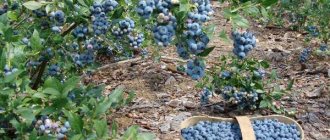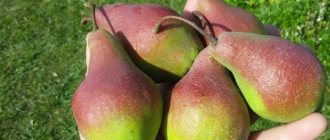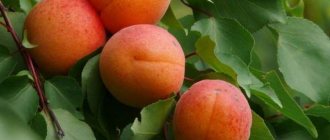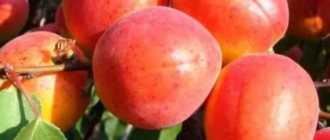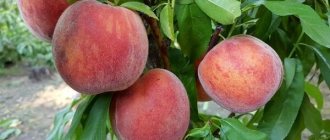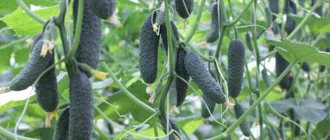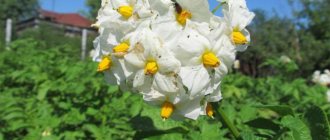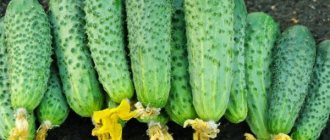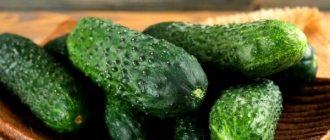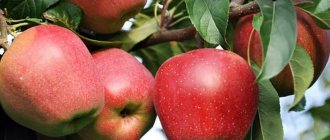Wild currant: beneficial properties and applications
Wild currant: beneficial properties and applications
Currants are the richest plant in vitamins and minerals. Leaves and berries are used for various colds and acute respiratory viral infections, gastrointestinal diseases, with their help they improve conditions in cardiovascular problems, in the presence of vitamin deficiency, in case of disruptions in the immune system and other health problems. For older people, this plant will work to improve mental activity, cleanse the body of toxins and waste, lower cholesterol levels and strengthen blood vessels. The effect is due to the presence of organic acids, pectin, tannins and essential oils, as well as vitamins A, B, C, E, PP in wild currants.
It is important that at low temperatures the beneficial properties of the plant are preserved, which means berries frozen in the refrigerator are a vitamin mix for the whole year!
In addition to frozen, ground sweets, wild currant berries are used to make compotes, jam, marshmallows, and even sauces. An excellent preparation for winter is dried berries and leaves; they make tea with excellent taste and healing properties.
Wild currant: about the culture and its characteristics
Wild currant: about the culture and its characteristics
Wild currants can often be found along the banks of Ural and Siberian rivers and lakes. Sometimes it can be confused with thickets in forests, on ravines or even near a swamp. The distinctive features of turnips are their dark green three-lobed leaves, reminiscent of gooseberry leaves. Wild currant bushes reach a height of up to three meters. On autumn days, repiss delights with bright multi-colored foliage and becomes a wonderful decoration for any garden plot.
A tempting characteristic for any gardener is the ability of repiss to adapt to the most difficult weather conditions. This could be extreme heat in the summer or severe frost in the winter. But if the repis bushes die, it is not from heat or cold, but from time or from lack of proper care in nature.
In garden plots, grouse grouse are often used as protective green space. Its dense leaf cover provides excellent protection from the wind.
Siberian grouse blooms in May. Its beautiful yellow fragrant flowers reach a diameter of 1 cm. And the berries are unusually oblong for currants, stretching up to 1 cm. There are always quite a lot of berries on the bush, the color ranges from yellowish to black.
Wild currants taste sweet and sour, with much more acid. The harvest is harvested from July to August, ripening depends on summer weather.
General characteristics and varieties of repiss
Forest currant is a fairly large shrub, the height of which on average varies from 1 to 3 meters. Its characteristic feature is resistance to heat and cold, various diseases and pests.
The leaves of this shrub are small in size and three-lobed in shape, reminiscent of gooseberry leaves. In autumn, their color may change from green to red or yellow.
Wild currants, unlike cultivated varieties, have large bright yellow flowers. In addition, it has a strong and pleasant smell, which helps it attract insects for pollination. Repis usually blooms at the end of May.
Forest currant berries ripen in mid-June - early August, depending on climatic conditions. They are usually medium in size. The color range of berries can vary from yellowish to black. They have fairly thick and sour skin. The pulp is sweet, reminiscent of ripe gooseberries.
Today, there are two most common varieties of wild currants, namely:
- wild black currant – has medium sweetness;
- red currants are the most sour of all types of repiss.
Red wild currant grows in forests and along the banks of rivers in central Russia, Siberia and the Far East.
Due to the fact that this berry contains a fairly large amount of pectin, it has established itself as an excellent component for making jelly. In addition, this type of repiss quenches thirst very well and helps improve appetite.
Black forest currant is common in the forests of the European part of Russia, as well as in Siberia, Kazakhstan and the Urals. There is especially a lot of it in ravines, as well as along the banks of rivers and swamps. These berries are good for harvesting and eating fresh.
Forest currants are used in the same way as cultivated garden varieties. It can be eaten either fresh or made into jam and various homemade preparations. These berries are not only tasty, but also healthy, as they contain a large amount of useful elements, such as vitamins A and C. Not only berries, but also plant leaves are used in preparations.
The beneficial properties of this type of currant include its diuretic effect and the ability to reduce temperature. It is recommended to add the berries of this plant to your diet if you have stomach diseases, cardiac disorders and diseases of the circulatory system. They are also indicated for weakened immunity, colds and infectious diseases.
Repis, wild currant: types
Repis, wild currant: types
Today we’ll talk about two types of wild currants - wild black and red. Wild black currant is found in the forests of the Urals, the European part of the country and the Republic of Kazakhstan. They eat it raw, freeze it, or prepare it for the winter.
Wild red currants grow in European rivers, lakes, forests, and places near swamps. In southern Europe it is found in the mountains. The strong sour taste of red spruce grouse prevents you from enjoying the fresh berry. But the preserves and jams made from it are simply excellent. It is also dried and added to teas, made into compote with spruce grouse, and also added to meat sauces and fillings for sweet dishes.
Anti-cold currant juice
Hot blackcurrant juice will help you recover faster from a cold in winter and will invigorate you in the off-season.
You will need:
- 2 cups black currants;
- 2 liters of water;
- 0.5 cups sugar.
How to cook:
- The berries can be taken fresh or frozen. Place the currants in a wide bowl and mash with a mortar or grind in a blender.
- Squeeze the juice out of the pulp.
- Fill the berry pulp with water and place on medium heat. When the broth boils, cover the pan tightly, reduce the heat and simmer for 10 minutes.
- Strain the broth, add juice, sweeten and pour into a jug or jar. Drink hot or chill.
Wild currant photo, rules for growing on the site
Wild currant photo, rules for growing on the site
Almost any land is suitable for the Ural beauty. Undemandingness to soil is an attractive property of this plant for gardeners. The main thing in growing it is to choose high-quality planting material and choose the planting site wisely.
Strong and healthy seedlings are needed. When choosing seedlings, you should pay attention to: - the root system: the roots should be dry and dried; - mother cuttings should not suffer from diseases and harmful insects; — the daughter shoots should not have dried and limp leaves (otherwise there are pests); — the seedling must have several healthy branches; - each shoot must have three or more green living buds.
Wild currant seedlings for planting can be dug directly from the forest, choosing it from the very edge. Why? Because the outermost offspring are not oppressed by the mother bushes, and, moreover, as a rule, they get more sunlight. In a couple of years, such seedlings will delight you with the first berries, and in five years you will reap a decent harvest. So, how to prepare the soil and planting holes. As mentioned above, grouse are unpretentious in choosing soil.
Proper application of fertilizers is the main factor in the effective growth of this plant.
Siberian grouse are planted at the end of summer or at the very beginning of autumn, so that before the onset of cold weather the roots have time to get used to and strengthen. Some people plant in mid-spring, then the bushes will finally take root by winter, gain strength and even begin to grow.
Having chosen a place for planting, they dig holes (approximate dimensions - 0.6 × 0.6 m. The depth of the hole should be a little greater so that a bucket of humus can fit in. The humus is sprinkled with earth and a small tubercle is made. The roots of the seedling are carefully laid out on top and covered with soil like this , so as not to deepen the root collar of the plant.Next, water and mulch with cut straw or sawdust.
A few secrets for caring for a wild beauty
The agricultural technology of grouse grouse is very similar to the technology of caring for cultivated currant varieties, but there are still differences.
About watering . Water the spruce grouse weekly. Watering volume - up to 10 liters per 1 young plant. Water carefully, not under the roots, trying not to touch the root part.
When the first leaves bloom, watering is reduced to 2 times a month or even less often, depending on the weather. It is advisable to use settled and not cold water (especially for young seedlings). For established bushes, the temperature of the water for irrigation is not so important.
About fertilizer . The time to feed black and red wild currants is spring and autumn. At the beginning of the season in spring, in addition to mineral fertilizers, bird droppings are applied, which replaces nitrogen fertilizers. Organic fertilizers are applied on autumn days (up to four kilograms of humus per seedling, or one glass of wood ash per 10 liters of water will be enough). Apply fertilizers carefully so as not to damage the root systems of seedlings. For example, humus fertilizer is added little by little, mixing with the top layer of soil. Don’t forget to water thoroughly immediately after applying fertilizer.
About pruning and crown formation . Of course, in the wild, the bushes are not pruned. On a personal plot, spruce grouse also does not require crown formation. Fruiting bushes are pruned a little, cutting off broken and dry branches. Five-year-old shoots should also be removed; they will gradually be replaced by young shoots. The time for pruning is early spring, before the leaves bloom. Use garden shears or pruning shears. If wild currants serve as a fence for you, then the green hedge should be trimmed, giving the shape of this very fence.
Growing
To properly grow currants, get abundant harvests and preserve healthy fruit-bearing bushes for as long as possible, you need to follow simple rules.
Peculiarities
There are no significant features in growing currants. You need to know the characteristics of its type and variety and take them into account when organizing the care of the bush.
The characteristics of currant cultivation depend on the region in which it is cultivated.
In Siberia
When growing it in Siberia, it is necessary to take into account that the frosts there in winter are quite severe, and winters can have little snow and vice versa. Currants covered with snow tolerate cold well, but without snow cover they die. Therefore, you need to choose winter-hardy plant species and varieties and take measures to cover the bush.
In the Urals, varieties zoned for Siberia take root well. They tolerate frosts safely, and the warm Ural summer with frequent precipitation gives currants the opportunity to bear fruit abundantly.
In the middle zone
Currants grow well and bear fruit in the temperate continental climate of central Russia. Most varieties and types of currants are suitable for this area. There are no increased requirements for growing currants here. It is necessary to follow the general rules of planting, watering, fertilizing and pruning, and also cover the bushes in cold winters with little snow.
Since the Moscow region is characterized by warm summers and frosty winters, the type and variety of currants should be abundantly flowering, mid-season and frost-resistant. In general, caring for a bush is no more difficult than in any other region. In snowy winters, currants do not even need to be covered.
How to treat spruce grouse from pests and prevent diseases
The enemies and diseases of grouse grouse are the same as those of cultivated currants. They protect it from powdery mildew, bud mites, aphids and ants, currant borer and rust, gooseberry moth, etc.
The first thing they do is cut out the diseased shoots, then dig up the soil under the bushes and, of course, the main thing is not to forget to treat them with special means.
1. The buds have blossomed. Apply: solution “Decis”, “Confidor”, “Calypso”, anometrine emulsion (25%). 2. Before or after flowering. Treated with: colloidal sulfur (fights powdery mildew and currant mite). 3. 30 days after the bushes have bloomed. Apply: “Karbofos” or “Chlorophos” (fight with borer and glasswort).
Folk remedies are very effective. Solutions and decoctions are useful here: - onion peel; - garlic; - dandelion; - wormwood; - soap; - potato tops. If your wild beauty is unlucky and a bud mite falls in love with her, then the bush is dug up and burned. Otherwise, you risk losing your entire currant plantation.
Experienced gardeners recommend!
1. Plant a couple of bushes in your garden for mutual pollination. 2. If harmful insects appear on one bush, it is worth treating all the bushes. 3. To prevent currant bushes from being damaged by rodents (mice, hares, etc.) in winter, wrap the branches of the lower part of the bushes with plastic bags (old elastic women's tights can also do) 4. Having planted a young seedling, make fastenings around the circumference from thickened branches, thin sticks or planks. With their help, the bush will not fall apart.
The wild currant beauty does not need much attention or special care, which is why it has gained popularity among gardeners. Against this background, an unprecedented harvest (up to 8 kg) can be harvested from one developed bush. And the recommended pair of bushes in your garden guarantees you, in addition to a hedge and a beautiful view, a supply of vitamins for the whole year!
Wild currant
Gardening tips for growing wild currants
It is better to plant two bushes on your site so that they can later pollinate from each other. If pests appear on one currant bush, all existing plantings should be treated.
In winter, rodents attack the berry fields. To protect the forest currant bush from mice and hares in winter, the lower branches can be wrapped in polyethylene or old nylon tights.
After planting a young currant seedling, you can make a quadrangular fastening around it from thick branches or boards so that the bush does not fall apart in the future.
Wild currants, or repiss, are very easy to care for, so they are popular among gardeners. The yield from one adult bush per season reaches 8 kg. This fact suggests that it is enough to have a couple of bushes on your site. Yes, and you can plant them in a corner.
